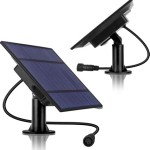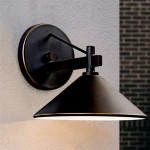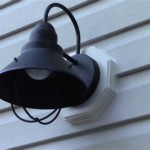How to Use Solar Outdoor Lights
Solar outdoor lights are a convenient and eco-friendly way to illuminate your outdoor spaces. They convert sunlight into energy, providing a sustainable and cost-effective lighting solution. To maximize the benefits of solar outdoor lights, it's crucial to understand the basics of their operation and follow best practices for installation and use.
Choosing the Right Solar Lights
The first step in using solar outdoor lights effectively is selecting the appropriate type and features for your needs. Consider the following factors:
- Lumens: This measurement indicates the brightness of the light. Choose a lumen output that suits the intended application, such as path lighting, security lighting, or accent lighting.
- Battery Capacity: The size of the battery determines the light's duration. Larger batteries provide longer run times, especially on cloudy days.
- Light Type: Solar lights come in various types, including floodlights, spotlights, string lights, and lanterns. Choose the style that best complements your outdoor decor and lighting requirements.
- Motion Sensor: Motion-activated lights offer enhanced security and energy savings by illuminating only when motion is detected.
- Waterproof Rating: Outdoor lights should have a high IP rating (Ingress Protection) to withstand rain, snow, and humidity.
Installing Solar Lights Correctly
Proper installation ensures optimal performance and longevity of your solar lights. Follow these guidelines:
- Location: Choose a location that receives ample sunlight throughout the day. Avoid obstructions like trees, buildings, or fences that can shade the solar panel.
- Mounting: Securely mount the lights using appropriate fasteners and ensure the solar panel faces south (in the Northern Hemisphere) for maximum sun exposure.
- Wiring: For wired solar lights, ensure proper connections between the solar panel and the light fixture. Consult the manufacturer's instructions for detailed wiring diagrams.
- Cleaning: Regularly clean the solar panel to remove dirt and debris that can hinder light absorption.
Optimizing Solar Light Performance
Once installed, there are several steps you can take to maximize the efficiency of your solar outdoor lights:
- Seasonal Adjustments: As the sun's angle changes throughout the year, adjust the solar panel's position to ensure optimal exposure.
- Light Scheduling: Utilize timers or dusk-to-dawn sensors to control the lighting schedule. This allows for efficient energy usage and prevents unnecessary illumination during daylight hours.
- Battery Maintenance: Periodically check and replace the batteries to maintain optimal performance. Batteries typically have a lifespan of 1-2 years.
- Environmental Considerations: Minimize the use of other outdoor lighting sources, such as porch lights or spotlights, to allow your solar lights to charge efficiently.
By following these tips for using solar outdoor lights effectively, you can enjoy beautiful, eco-friendly illumination while minimizing energy consumption and maximizing battery life.

Transform Your Garden With Solar Lights Eco Friendly Hoselink

Solar Garden Lighting Ideas 18 Pretty Energy Saving

How Do Solar Garden Lights Work Outdoorlights The

Solar Lights Distance And Spacing Tips Living By Homeserve

How To Make Solar Power Outdoor Lights Just Measuring Up

5 Best Outdoor Solar Lights Of 2024 Reviewed
How Solar Yard Lights Work Howstuffworks

Do Solar Lights Work In The Shade Or Need Direct Sunlight Conserve Energy Future

Benefits Of Solar Lighting In Gardens Bioenergy Consult

Hammond Solar Path Lights Set Of 4 Outdoor Lighting Landscape
Related Posts







